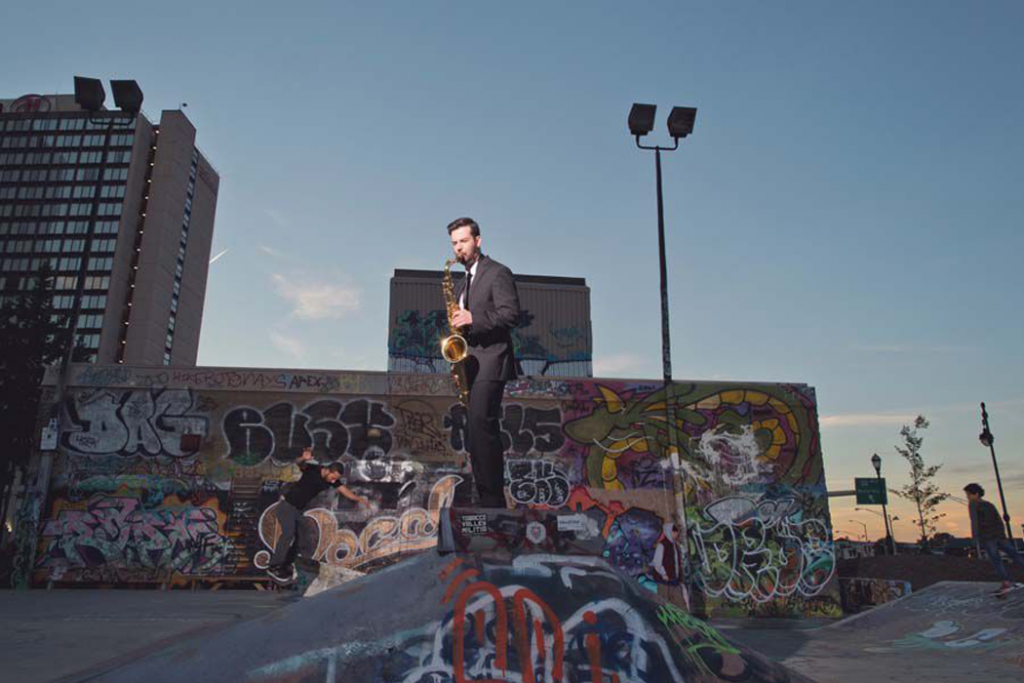+ Take your modern jazz piano and hip-hop beat making to new heights with Soundfly’s new course, Elijah Fox: Impressionist Piano & Production!
By Mike Casey
Raise your hand if you’ve heard this cliché before: “Simplicity is the ultimate sophistication.”
Well, as cheesy as that sounds, I happen to believe it’s right on the money. After all, advanced musical devices, concepts, and patterns are usually just a slew of basic fundamentals stacked on top of one another, inverted, twisted, or broken up. When you break anything down, it’s easy to see how simple those fundamentals really are.
Still though, making simple sound sophisticated is no easy task!
I’m going to show you a few exercises that continually help me focus on simplicity in my playing. I like to call this form of practice “expansion by confinement” because it involves boxing oneself in to explore and develop musical possibilities within a specific target skill set.
That said, this is not a beginner’s guide to improvising around a rhythm or chord sequence (although Soundfly’s free course The Improviser’s Toolkit is). These exercises are challenging because they require the performer to think and act creatively and artistically while remaining grounded in simplicity.
And, for this reason, they are also deeply rewarding.
When I do teach beginning improvisers, I start them off with what is, to some, a pretty unusual exercise: soloing with only one note. And I believe this exercise to be so crucially important that I don’t let them move beyond it until they’re highly proficient.
A brief aside…
We recently launched a video on our YouTube channel about a moody, smooth, sombre chord that we can never get enough of; also how and when to use it to full effect. Musicians, theorists, and curiosity-junkies, come one come all, and subscribe if you like that sorta thing!
The One-Note Solo
Yes, you read that right. If you can’t take a compelling solo with one note, what’s the point of adding more notes?
When you’re forced to solo using one note, you’re eliminating the melodic and harmonic aspects of playing completely. Instead, this exercise forces you to focus on all these other elements, such as:
- sound and timbre
- rhythm and getting into a groove/finding the pocket
- phrasing
- articulation
- dynamics
- storytelling
- confidence
One easy way to make sure you’re getting something from this is to incorporate each of the above elements into the performance of your single note. This exercise is at the same time one of the most basic and one of the most abstract, deep, creative things you can do during practice. Even though I’ve been playing saxophone for 15 years, I revisit this exercise (and variations of it) often.
Try practicing this exercise in the following variations:

And be sure to practice using various time signatures, tempos, and grooves! Once you’re comfortable with this, practice “breaking free” from it.
For example, if you’re soloing over a blues progression, take a chorus on one note, then break free for a chorus and solo normally. Return to one note for four bars, and then break free again. The more you exercise the combination of restraint and limitlessness, the more you’ll be able to channel urgency, articulation, emotional intent, and delivery. When most musicians think about tension and release, they often think about harmony. But what about tension and release in regards to space, phrasing, rhythm, sound, and dynamics?
Here’s an example of me soloing on one note during a recent gig then breaking free and continuing on to create the next musical chapter of the song. And listen to how the rhythm section responds throughout!
+ Learn more on Soundfly: Improvisation is a natural in-road to composition. Learn how to take what happens spontaneously and turn it into your next opus with Tim Hansen’s mentor-driven course Introduction to the Composer’s Craft.
Simple Scale Manipulations
Here’s a second exercise you can do to focus on simplicity in melody while strengthening your ear for a particular chord or chord type.
Pick one chord type per rehearsal session (for example, C Major).

Tritone-Cluster Inversions
And finally, here’s one of many harmonic exercises I do to focus on simplicity. There are so many ways to think about chord substitutions. I tend to think of them from the standpoint of “pivoting.” For example, if I’m going from G7 to Cmaj7 and want to do a tritone sub, in my head, I’ll mentally pivot completely into or in and out of C#7 over the G7 before resolving.
One way you can easily practice this action mechanically (so that, in the moment, you can think less and do more) is to break your chords down to their lowest common denominator — the triad. Remember, every four-note chord was a triad first!
Try this:

Stretch this exercise as far as you can. Just remember that while there’s no wrong way to flip these intervals around, the goal is to move stepwise whenever possible. If you’re really enjoying exploring this one, feel free to experiment with other combinations like minor thirds or octave jumps.
Like all of the above exercises, this one is more challenging than it looks technically, but it’s helpful in getting us to improvise within the confines of the simplest chord shape, the triad. Not only does that help to put the core “sound” of whatever the substitution is both in our head and under our fingers so that in the moment we can just play without thinking, but it’s a really colorful addition to our improvisational toolbox!
Using triads as the basis for a solo is also referred to as improvising using chord tones. In the video below, taken from Soundfly’s free course The Improviser’s Toolkit, Mahea Lee explores more ways to use chord tones in your improv practice.
Play Your Heart Out!
Continue your learning adventure on Soundfly with modern, creative courses on songwriting, mixing, production, composing, synths, beats, and more by artists like Kiefer, Kimbra, Com Truise, Jlin, Ryan Lott, RJD2, and our newly launched Elijah Fox: Impressionist Piano & Production.
—
Saxophonist and composer Mike Casey has been a fixture on the Hartford jazz scene and beyond since 2008, since attending both the Greater Hartford Academy for the Performing Arts and the acclaimed Jackie McLean Institute of Jazz housed at the University of Hartford. In 2015, Casey was one of 24 young composers chosen to participate in the prestigious “Betty Carter Jazz Ahead” Program at The Kennedy Center, led by Jason Moran. He has performed at Dizzy’s Club Coca-Cola, Minton’s, Ginny’s Supper Club as well as The NYC Winter Jazz Fest, Lincoln Center, Summerstage, and Cape May’s Exit Zero Jazz Festival.




